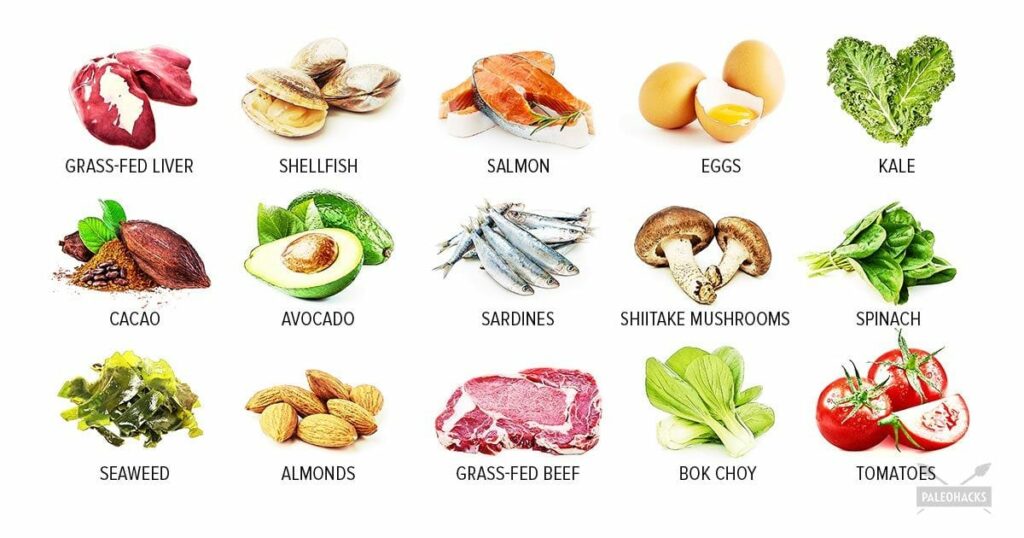Navigating the Changes in Food Nutrition Definition: Tips for Consumers. In today’s fast-evolving food landscape, understanding what goes into your meals is more important than ever. With continuous updates in scientific research, regulatory guidelines, and consumer expectations, the concept of how we define nutrition in our food has undergone significant shifts. This article explores the various aspects of the Food Nutrition Definition, offering insights and practical tips for consumers who want to navigate these changes confidently and make choices that support their well-being.
Food Nutrition Definition: Understanding the Basics
Before diving into the latest updates, it’s helpful to revisit the fundamental concept of the Food Nutrition Definition. Traditionally, nutrition focused on the essential macronutrients—carbohydrates, proteins, and fats—as well as a range of vitamins and minerals that the body requires to function properly. However, over time, the scope has broadened to include not just the quantity of nutrients, but also the quality and sources of these nutrients.
Food Nutrition Definition now extends to considering factors such as the presence of additives, processing methods, and the overall balance between energy intake and expenditure. As consumers, being familiar with these elements can help you make more informed choices. Whether you’re scanning a food label in the grocery aisle or trying to plan a balanced meal, knowing what each component means in terms of health is a powerful tool for better eating habits.
Food Nutrition Definition: The Evolution of Dietary Guidelines

Over the years, dietary guidelines have evolved in response to new scientific evidence and public health trends. The Food Nutrition Definition that we once learned in school is now much more dynamic, reflecting changes in our understanding of chronic diseases, metabolism, and even the environmental impact of food production. (Read More: Why Nutrition in Sweet Potato Makes It a Must-Have Food).
For instance, earlier guidelines that emphasized low-fat diets have given way to more nuanced advice that recognizes the importance of healthy fats in maintaining heart health and overall bodily functions. Similarly, the role of carbohydrates has been redefined with increased emphasis on whole grains and fiber-rich sources instead of simple sugars and refined products. International bodies, including the World Health Organization and various national health agencies, continue to update these definitions, so staying current is key. By keeping an eye on these evolving recommendations, you can adjust your eating habits to match the latest scientific insights.
Food Nutrition Definition: Impact on Labeling and Packaging
The shifts in our understanding of nutrition have had a direct impact on how food is labeled and packaged. Modern food labels now include a more comprehensive breakdown of nutritional content, often highlighting components like dietary fiber, added sugars, and even the origin of certain ingredients. These changes in the Food Nutrition Definition ensure that labels provide a clearer picture of what you’re eating, yet they can sometimes seem overwhelming.
When shopping, take a moment to look beyond the flashy front-of-package claims and examine the detailed nutrition facts panel. Look for familiar terms and try to decode any new terminology by comparing it with trusted resources. The evolution of these labels is intended to empower consumers with better information—so investing a little time to understand these updates can lead to healthier choices. As you get accustomed to reading more detailed labels, you might find that this practice becomes second nature, guiding you through the complexities of modern food packaging.
Food Nutrition Definition: Navigating Marketing Claims
Food manufacturers are quick to adapt to changes in nutritional science, often using updated Food Nutrition Definition standards to craft appealing marketing messages. Terms such as “natural,” “clean label,” or “fortified” are now commonplace, but they don’t always tell the full story of a product’s nutritional profile. Sometimes, these claims can be more about branding than about substantive health benefits. (Read More: Nutrition Panda Express Just Introduced 5 New Menu Items).
It’s helpful to approach marketing claims with a bit of healthy skepticism. Instead of taking these statements at face value, use them as starting points for further investigation. For example, if a product is labeled as “low fat,” check the overall nutrient breakdown to see if it compensates with higher sugar content or sodium levels. Similarly, claims of “superfood” status often require context—what makes the ingredient particularly beneficial, and how does it fit into the broader Food Nutrition Definition? By critically evaluating these marketing messages, you can avoid falling into the trap of purchasing items based solely on buzzwords and instead focus on products that truly align with your nutritional needs.
Food Nutrition Definition: Practical Tips for Everyday Shoppers

Empowering yourself with a solid understanding of the Food Nutrition Definition can transform your grocery shopping experience. Here are some practical tips to keep in mind as you navigate the modern food landscape:
- Read Beyond the Front Label: Always look at the detailed nutrition facts panel. Modern labels now list additional information such as fiber content, types of fats, and sometimes even the presence of genetically modified ingredients. Understanding this information can help you make a more informed decision.
- Educate Yourself Continuously: With guidelines changing frequently, subscribing to newsletters from reputable health organizations or following trusted nutrition experts on social media can keep you updated on the latest Food Nutrition Definition changes.
- Prioritize Whole Foods: While processed foods often come with sophisticated labels, the safest bet is still whole, unprocessed foods. Fruits, vegetables, whole grains, and lean proteins tend to have clearer nutritional profiles that are easier to interpret and align with evolving definitions.
- Be Critical of Buzzwords: Words like “organic,” “gluten-free,” or “non-GMO” might sound appealing, but they don’t necessarily guarantee a product’s overall nutritional quality. Use these terms as part of a broader evaluation rather than as the sole deciding factor.
- Experiment and Listen to Your Body: Nutritional needs can vary widely from person to person. Sometimes, a product that looks great on paper might not be the best choice for your unique dietary requirements. Paying attention to how your body reacts to certain foods can provide valuable feedback that complements the official Food Nutrition Definition.
By incorporating these tips into your shopping routine, you can make choices that reflect both current nutritional science and your personal health goals. This proactive approach can transform what might seem like a complicated maze of numbers and labels into a manageable, even enjoyable, part of your daily life.
Food Nutrition Definition: Embracing New Trends in Nutrition Science
The realm of nutrition is ever-changing, and new trends continue to emerge that influence how we understand the Food Nutrition Definition. One such trend is the rise of personalized nutrition, where diets are tailored to an individual’s genetic makeup, lifestyle, and health needs. Advances in technology now allow for more precise tracking of nutrient intake, making it easier for consumers to adjust their eating habits based on real-time data and feedback. (Read More: Nutrition in Sweet Potato: A Superfood for Your Health).
Another emerging trend is the increased focus on plant-based diets. Research suggests that incorporating more plant-derived foods into your meals can offer a range of health benefits, from improved heart health to a lower environmental footprint. As the Food Nutrition Definition adapts to include these insights, more food products are being reformulated to meet the demands of a market that values sustainability alongside health.
Furthermore, the conversation around food isn’t limited to the nutrients alone. Issues such as the bioavailability of vitamins and minerals—how well your body can absorb and utilize these nutrients—are becoming integral parts of the discussion. The integration of these factors into the Food Nutrition Definition highlights the complexity of nutrition science and underscores the importance of a holistic approach to health.
Consumers can benefit greatly from embracing these trends. For example, experimenting with new plant-based recipes or trying out apps that track nutritional intake can make the process of aligning with current guidelines both engaging and educational. By staying curious and open to new ideas, you can seamlessly integrate modern nutritional concepts into your everyday life.
Food Nutrition Definition: Exploring Nutrient Density and Health Benefits

A modern interpretation of the Food Nutrition Definition places a strong emphasis on nutrient density rather than just calorie counts. Nutrient-dense foods provide a high amount of vitamins, minerals, and other beneficial compounds relative to their calorie content. This approach encourages you to seek out foods that not only fill you up but also nourish your body with essential nutrients.
For example, leafy greens, berries, nuts, and seeds are celebrated for their high nutrient density. These foods offer a range of benefits, from boosting immune function to supporting cognitive health, and they are a staple in many diets designed to meet the latest Food Nutrition Definition standards. When shopping, consider the nutritional “bang for your buck” that a food provides—this perspective can help you prioritize quality over quantity.
It’s also worth noting that the concept of nutrient density extends beyond individual foods to entire dietary patterns. Diets that emphasize a variety of nutrient-dense options, like the Mediterranean diet, are often cited as models for balanced eating. Adopting such patterns doesn’t mean you have to overhaul your entire lifestyle overnight; small, gradual changes—like incorporating an extra serving of vegetables or swapping out refined grains for whole grains—can add up over time.
Staying informed about the latest discussions on nutrient density and how they fit into the broader Food Nutrition Definition can empower you to make adjustments that align with both scientific insights and your personal health goals. Experimenting with different recipes and meal plans can turn this exploration into a fun, ongoing journey.
Navigating the changes in how we define food nutrition might seem challenging at first, but by breaking down the new terminology, evaluating marketing claims critically, and adopting practical strategies, you can confidently adapt to these updates. With a proactive approach and a commitment to continuous learning, the evolving Food Nutrition Definition can become a valuable guide in your pursuit of a healthier lifestyle.


